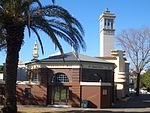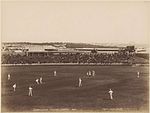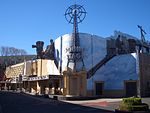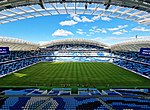Global Television (Australia)
Global Television is a large television production company with studios in Australia's two largest cities Sydney and Melbourne. It was co-founded in 1988 by Bruce Fink. They have been responsible for handling the technical side of most top live sport and entertainment events produced and broadcast in Australia.Global Television's Sydney studios are located at the Australian Technology Park in the inner city suburb of Eveleigh. The new studios were built in 2010, and produce a large number of Australian programmes from its two studios. Global Television's Melbourne studios are located in the inner suburb of South Melbourne and occupy the previous existing HSV-7 Studios. The four open studios are home to such shows as Dancing with the Stars, The Chase Australia, Family Feud and Fox Footy.Global Television also occupies the former ATV-10 Studios in the outer suburb of Nunawading where Neighbours is produced at Forest Hill.
Excerpt from the Wikipedia article Global Television (Australia) (License: CC BY-SA 3.0, Authors).Global Television (Australia)
Poate Road, Sydney Centennial Park
Geographical coordinates (GPS) Address Nearby Places Show on map
Geographical coordinates (GPS)
| Latitude | Longitude |
|---|---|
| N -33.89202 ° | E 151.22851 ° |
Address
Stage 6
Poate Road
2021 Sydney, Centennial Park
New South Wales, Australia
Open on Google Maps









